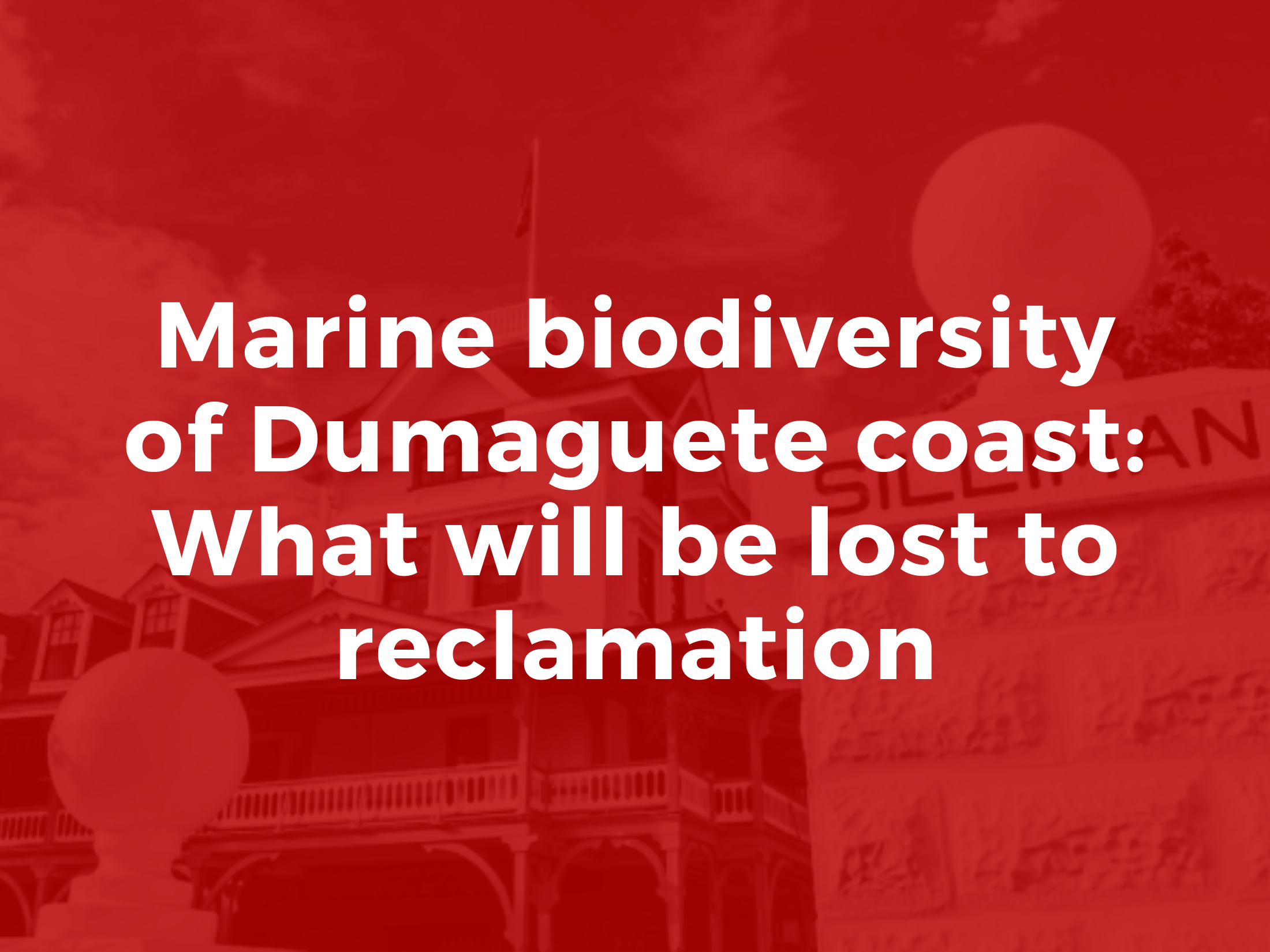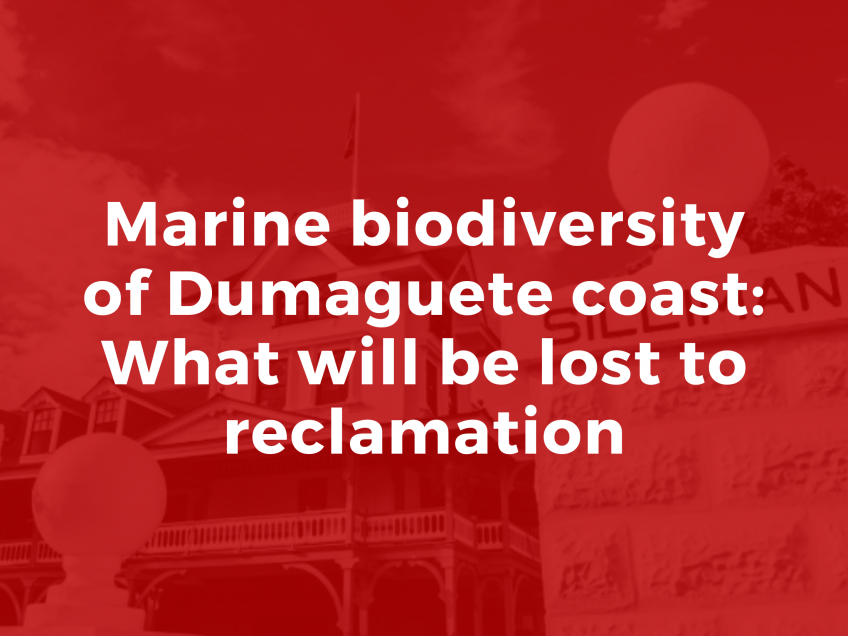
Marine biodiversity of Dumaguete coast: What will be lost to reclamation

Dr. Aileen Maypa, Clarissa Reboton, Danielle Mark Fukuda and Dr. Janet Estacion
Silliman University – Institute of Environmental and Marine Sciences
The Philippines is one of the hotspots of global marine biodiversity. This means that the number and diversity of marine organisms in the Philippines are very high. Part of this biodiversity are the hundreds to thousands of species of fish, shells, crabs and shrimps that we call “food.” Part of this biodiversity too are the habitats of our food, such as the many species of mangroves, seagrasses, and corals. For a country that relies on fish and fish products as its staple food next to rice, has many communities that depend on coastal and marine tourism for employment and livelihood, and has a plan to invest in nature-based tourism, protection of biodiversity and its habitats should be a priority and not reclamation.
The approximately 8 km coast of Dumaguete City is located in the central Philippines; thus, it is part of the center of a biodiversity hotspot. Preliminary results of a recently concluded marine habitat and biodiversity surveys of Silliman University – Institute of Environmental and Marine Sciences (SU – IEMS), supported by the Silliman University Alumni Association Inc. (SAAI), estimated more than 200 species of fish, approximately 200 coral species, more than 100 macroinvertebrates species, and seven seagrass species in four marine reserves and their adjacent fished areas. Using the Red List category of the International Union for Conservation of Nature (IUCN), the coral species of the Dumaguete coast included some endangered, vulnerable, and 20 threatened and 60 near threatened species. This makes the Dumaguete coast an “environmentally critical area” based on Proclamation 2146 of 1981.
Moreover, the Dumaguete coast is a functional fishing ground and has a lot of potential for marine ecotourism. According to data from the City Agriculture Office of Dumaguete city, annual fish production from 2019 to 2021 was estimated at 30 to 40 metric tons. Both reef (for example snappers, breams, parrotfishes, sweetlips, surgeonfishes, and wrasses) and pelagic fish species, such as round and bigeye scads, mackerel tuna, Indian mackerel and sardines among others, were recorded in the fish catch. The macroinvertebrates included species of sea urchin locally known as salawaki in Cebuano. These species are common in the shallow seagrass beds commonly gleaned by fisherfolks for its gonads, along with many shell species. Charismatic macroinvertebrates popular with scuba divers and snorkelers such as nudibranchs, anemone small shrimps, and crabs were also recorded.
In 2021, Silliman University, together with the NoTo174Dumaguete Coalition, many sectors, and private citizens of Dumaguete City, opposed a 174 ha reclamation and island building along the Dumaguete Coast. To date, active reclamation in this City can be seen through the continued extension of Pantawan Dos. We appeal to the mayor of Dumaguete City and to those who practice reclamation to instead prioritize food security, resilience against the adverse impacts of rapid climate change through marine biodiversity protection and conservation, and sustainable development before our already declining fish stocks and marine resources collapse. Dumaguete City and its residents will surely benefit from activities that will focus on rehabilitation of water quality and degraded marine ecosystems, management of solid and liquid waste that goes directly to the ocean, and marine biodiversity protection activities.


